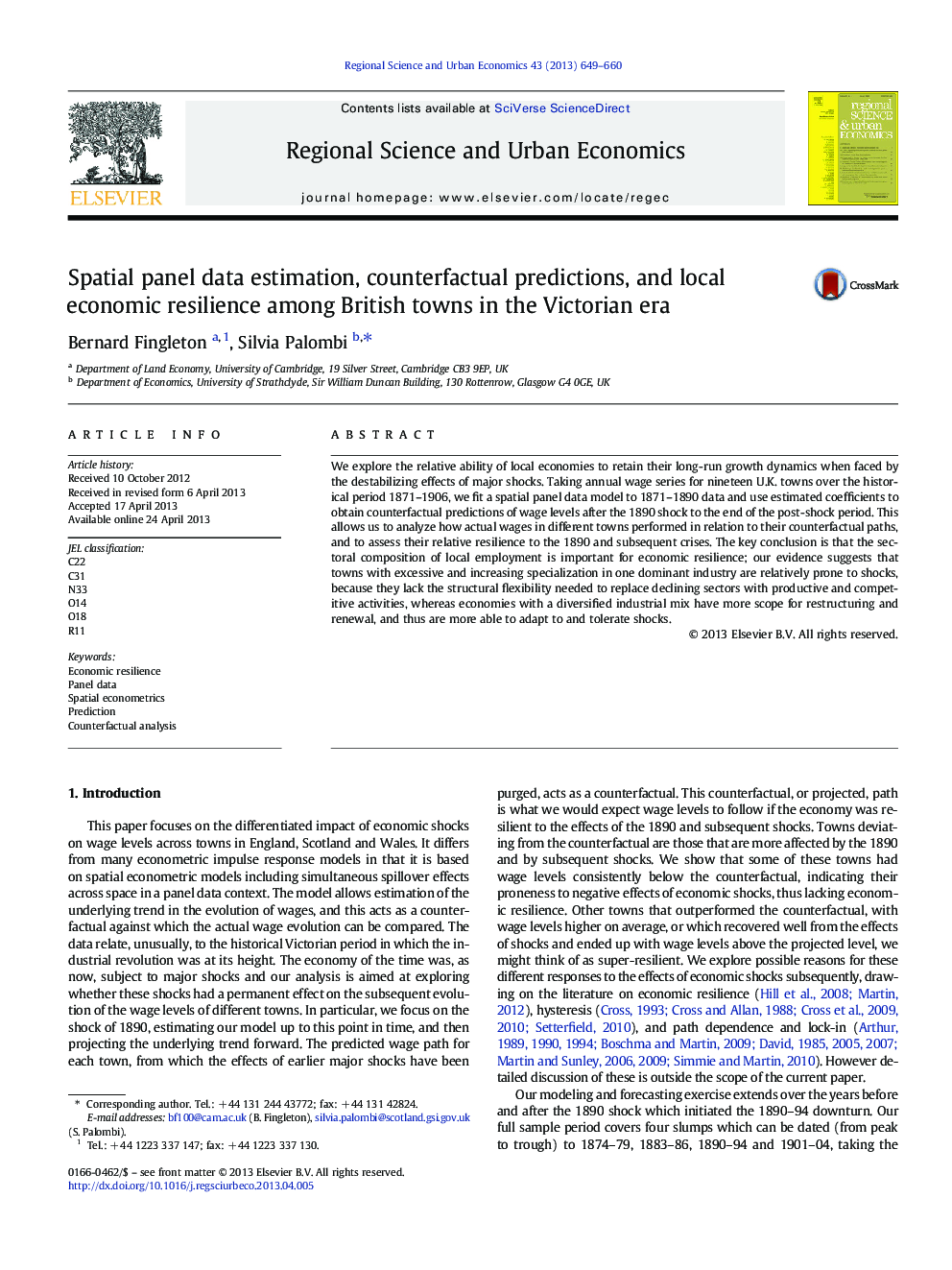| Article ID | Journal | Published Year | Pages | File Type |
|---|---|---|---|---|
| 983369 | Regional Science and Urban Economics | 2013 | 12 Pages |
•We analyze the relative resilience of local economies to recessionary shocks.•The evolution of local wages is compared against levels in a no-recession scenario.•Spatial econometrics set-up allows for transmission of shock effects across towns.•Highly and increasingly specialized towns are relatively more prone to shocks.•Larger cities and towns becoming more structurally diversified are more resilient.
We explore the relative ability of local economies to retain their long-run growth dynamics when faced by the destabilizing effects of major shocks. Taking annual wage series for nineteen U.K. towns over the historical period 1871–1906, we fit a spatial panel data model to 1871–1890 data and use estimated coefficients to obtain counterfactual predictions of wage levels after the 1890 shock to the end of the post-shock period. This allows us to analyze how actual wages in different towns performed in relation to their counterfactual paths, and to assess their relative resilience to the 1890 and subsequent crises. The key conclusion is that the sectoral composition of local employment is important for economic resilience; our evidence suggests that towns with excessive and increasing specialization in one dominant industry are relatively prone to shocks, because they lack the structural flexibility needed to replace declining sectors with productive and competitive activities, whereas economies with a diversified industrial mix have more scope for restructuring and renewal, and thus are more able to adapt to and tolerate shocks.
